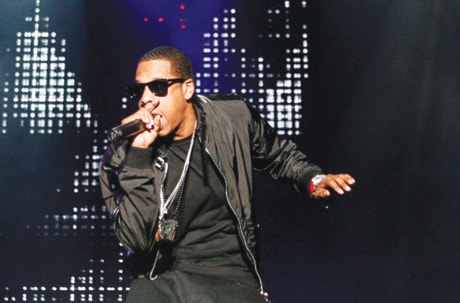The Blueprint 3
Jay-Z
Roc Nation
After 11 studio albums, 13 years, dozens of hits and untold millions of records sold, there’s not much left to debate about Jay-Z. He has either outlasted, outsold or outsmarted all the competition.
You either like his music or you don’t. So the only comparisons that can be made are to himself.
That said, Jay’s new The Blueprint 3 is on par with his past work. The beats are the best money can buy, from Kanye West, Timbaland, Pharrell, Swizz Beats and others. The lyrics are creative, imperial and evocative — “the audio equivalent of Braille,” in Jay’s words.
Overall, it’s a state-of-the-art performance by arguably the greatest to ever speak ghetto poems over music.
Then why does it feel like something’s missing?
More than any other modern genre, rap is built on struggle. On Blueprint 3, it seems that Jay’s only problem, other than where to land his private jet, is those pesky haters.
And since he spends so much time reminding us that “my track record speaks for itself / I’m so instrumental,” even the naysayers seem like leftover specks from the 2003 Dirt Off Your Shoulder video (which launched a trend so pervasive, then-candidate Barack Obama mimicked the move when talking about Hillary Clinton.)
Wealth and status shouldn’t erase the struggle from Jay’s lyrics. Jay has often mined emotional depths, like on 2003’s Lost Ones and Minority Report, and classics like Song Cry and Never Change from the first Blueprint album dealt with immaturity, costly loyalties and hard life lessons.
But the original Blueprint came out in 2001, the day the World Trade Center fell, followed soon after by the music industry.
Now Jay stands atop rap’s ruins, chilling with Oprah, living not in Brooklyn but Robert De Niro’s TriBeCa “with my highbrow art and my high-yellow broad” (the album’s only reference to wife Beyonce).
The musical distillation of this high life remains potent. Empire State of Mind with Alicia Keys is an instant New York City anthem, and Venus vs. Mars spins a cleverly told tale of twisted lust.
Jay laughs at trends in Off That and the icy On To The Next One. And the dissonant D.O.A. (Death of Auto-Tune) remains a genius dismissal of rap’s Auto-Tunes addiction, comparable to Jay’s murder of throwback jerseys in 2003.
But the majority of Jay’s Blueprint 3 lyrics are dedicated to the prowess of Jay. Just imagine if the man who sets trends as easily as he sets the time on his six-figure watches chose to dig deeper for subject matter.
Perhaps that’s what rap needs to reinvigorate itself — someone to pull the genre out of its money-clothes-cars-and-girls sinkhole.
Hopefully that will one day prove easy for a legend who envisions being on stage with Michael Jordan and “Obama on the Techs / y’all should be afraid of what I’m gon’ do next.”
